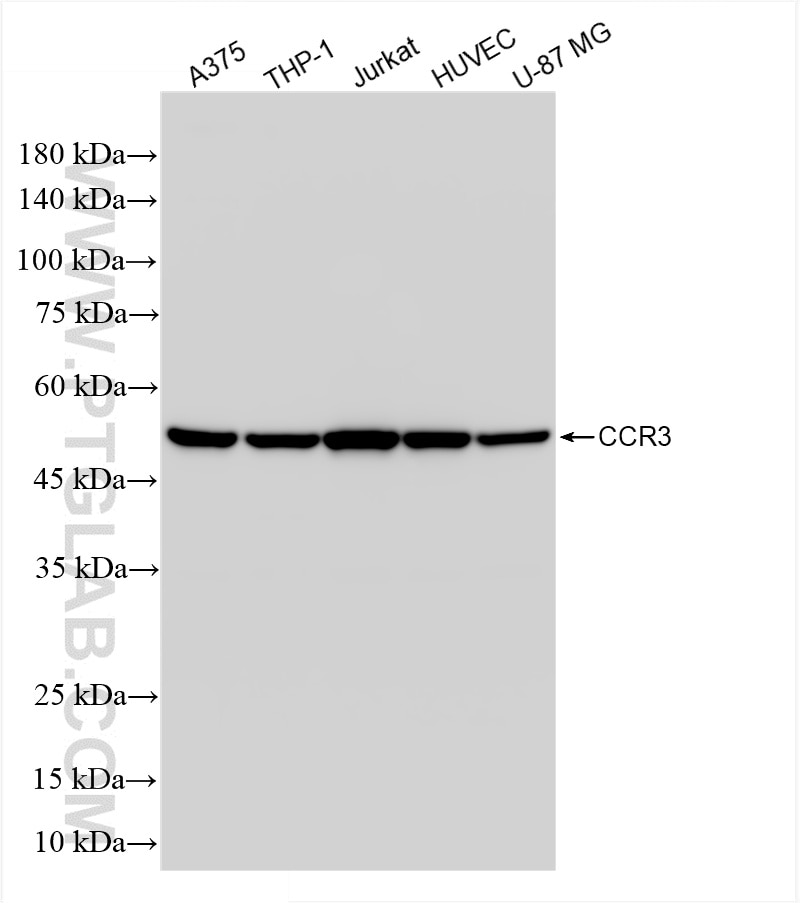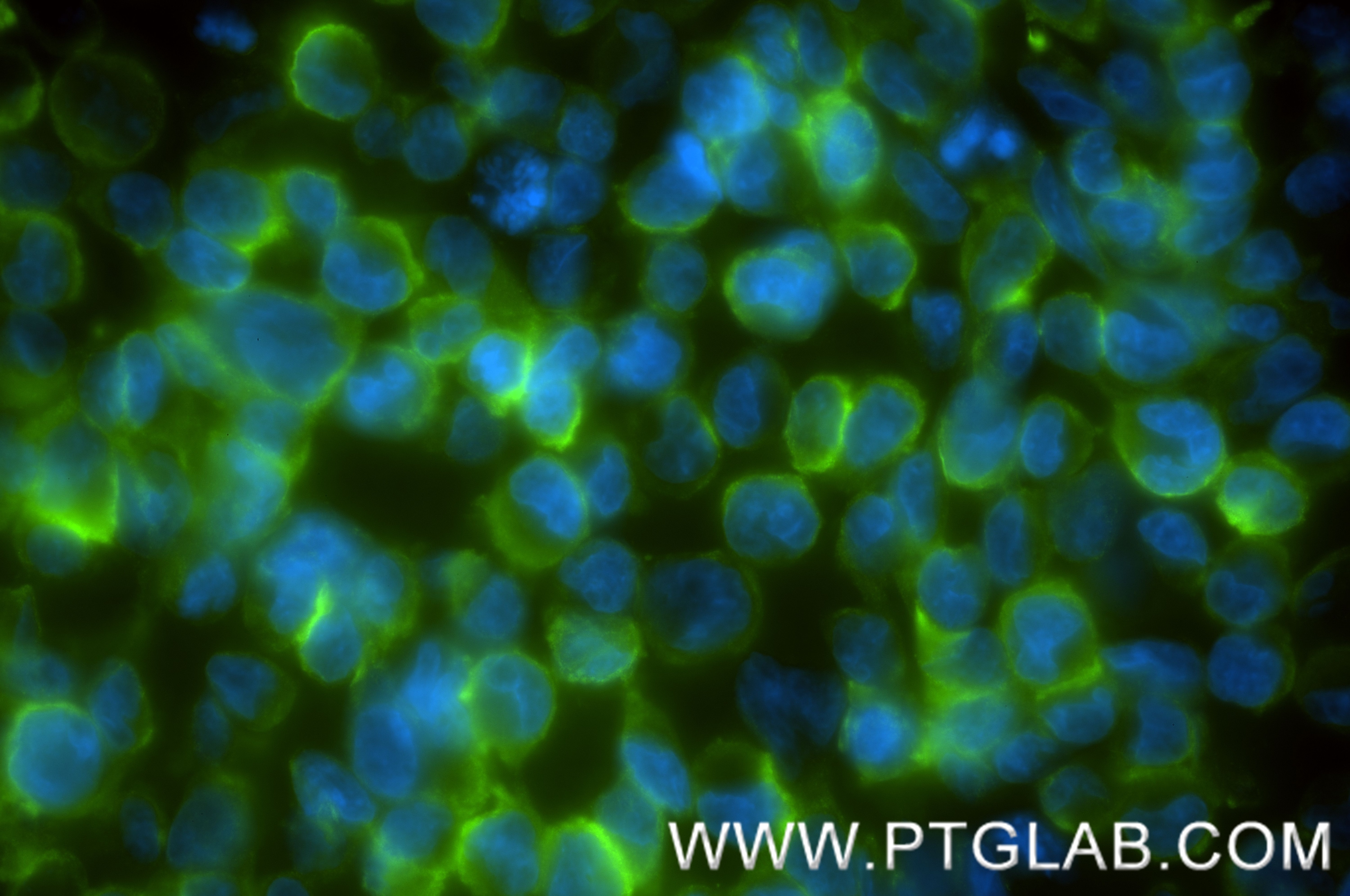Tested Applications
| Positive WB detected in | A375 cells, THP-1 cells, Jurkat cells, HUVEC cells, U-87 MG cells |
| Positive IF/ICC detected in | K-562 cells |
Recommended dilution
| Application | Dilution |
|---|---|
| Western Blot (WB) | WB : 1:1000-1:4000 |
| Immunofluorescence (IF)/ICC | IF/ICC : 1:250-1:1000 |
| It is recommended that this reagent should be titrated in each testing system to obtain optimal results. | |
| Sample-dependent, Check data in validation data gallery. | |
Product Information
86038-1-RR targets CCR3 in WB, IF/ICC, ELISA applications and shows reactivity with human samples.
| Tested Reactivity | human |
| Host / Isotype | Rabbit / IgG |
| Class | Recombinant |
| Type | Antibody |
| Immunogen | Peptide Predict reactive species |
| Full Name | chemokine (C-C motif) receptor 3 |
| Calculated Molecular Weight | 355 aa, 41 kDa |
| Observed Molecular Weight | 53 kDa |
| GenBank Accession Number | BC110297 |
| Gene Symbol | CCR3 |
| Gene ID (NCBI) | 1232 |
| Conjugate | Unconjugated |
| Form | Liquid |
| Purification Method | Protein A purification |
| UNIPROT ID | P51677 |
| Storage Buffer | PBS with 0.02% sodium azide and 50% glycerol, pH 7.3. |
| Storage Conditions | Store at -20°C. Stable for one year after shipment. Aliquoting is unnecessary for -20oC storage. 20ul sizes contain 0.1% BSA. |
Background Information
CCR3 (C-C Motif Chemokine Receptor 3), also known as CD193, is a G protein-coupled receptor (GPCR) primarily involved in immune cell trafficking and inflammation regulation and highly expressed in eosinophils and basophils, with detectable levels in Th2 cells, airway epithelial cells, and subsets of monocyte-derived dendritic cells (PMID: 21077277). Ligand-induced CCR3 internalization is required for eosinophil shape change and actin polymerization but not for calcium mobilization or desensitization (PMID: 12532103).
Protocols
| Product Specific Protocols | |
|---|---|
| WB protocol for CCR3 antibody 86038-1-RR | Download protocol |
| IF protocol for CCR3 antibody 86038-1-RR | Download protocol |
| Standard Protocols | |
|---|---|
| Click here to view our Standard Protocols |





